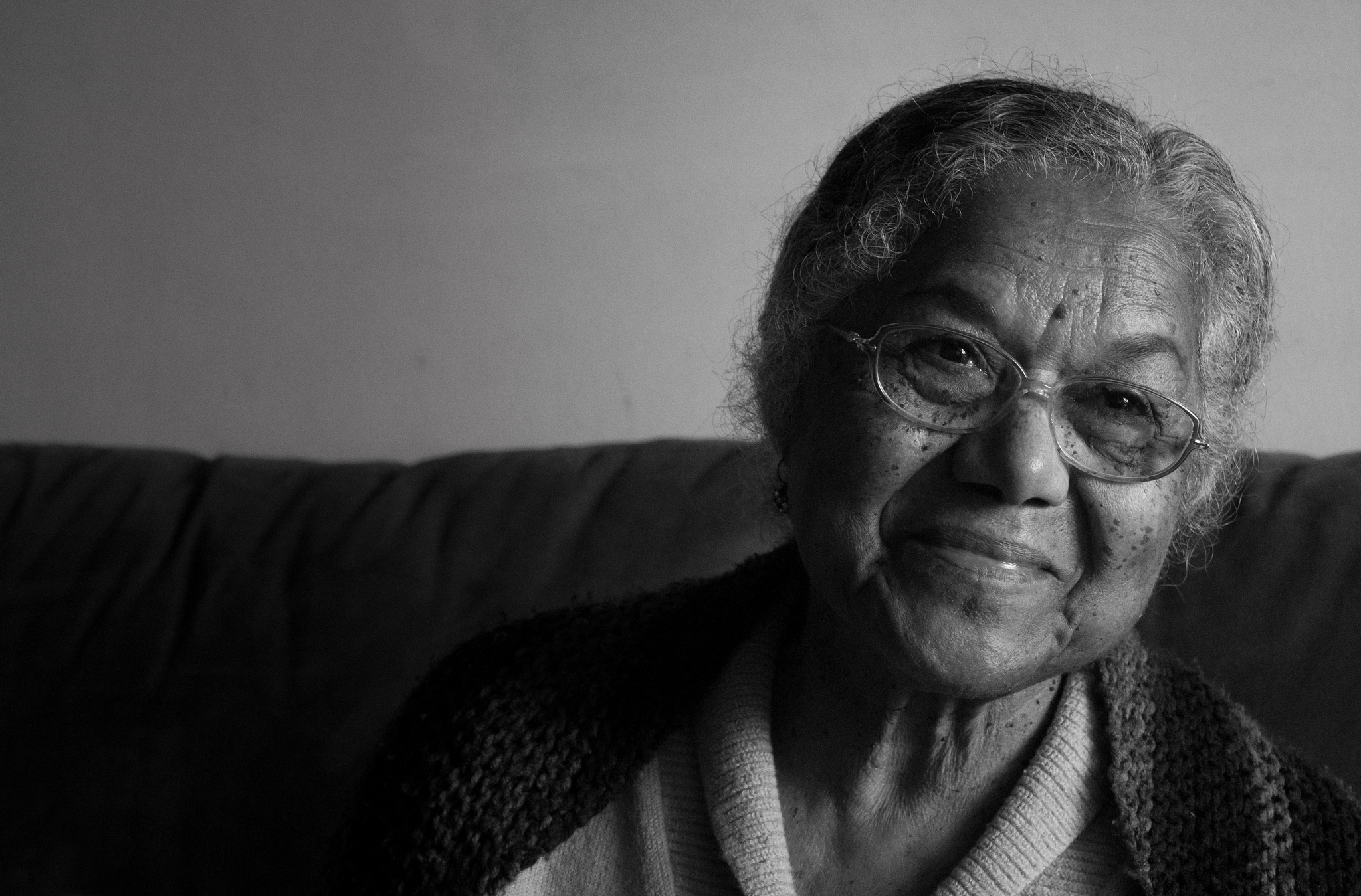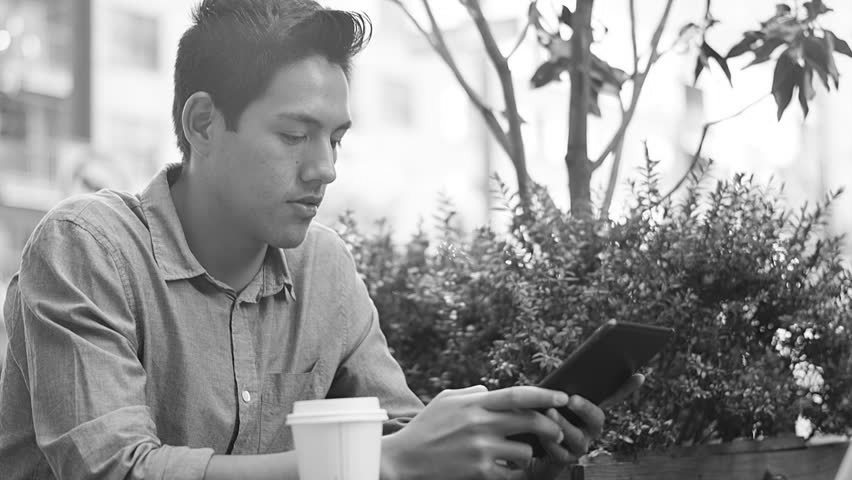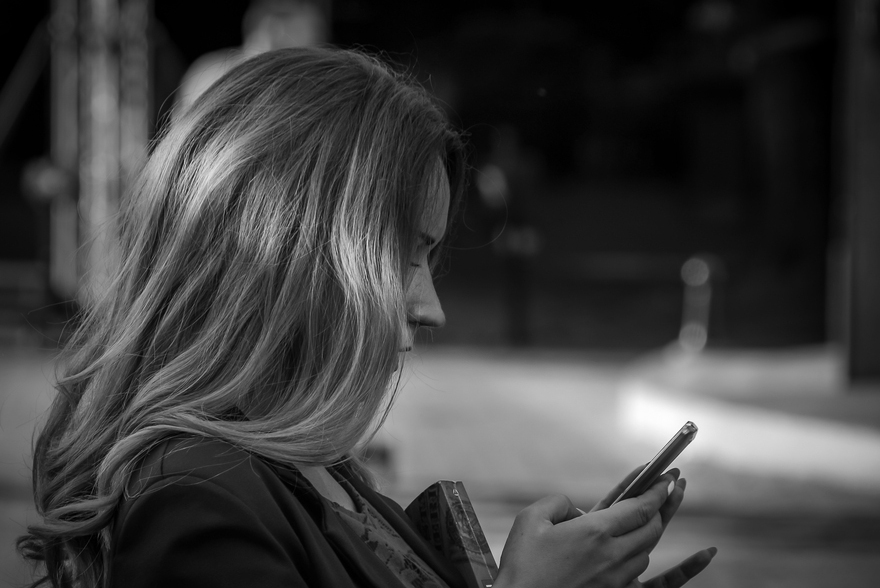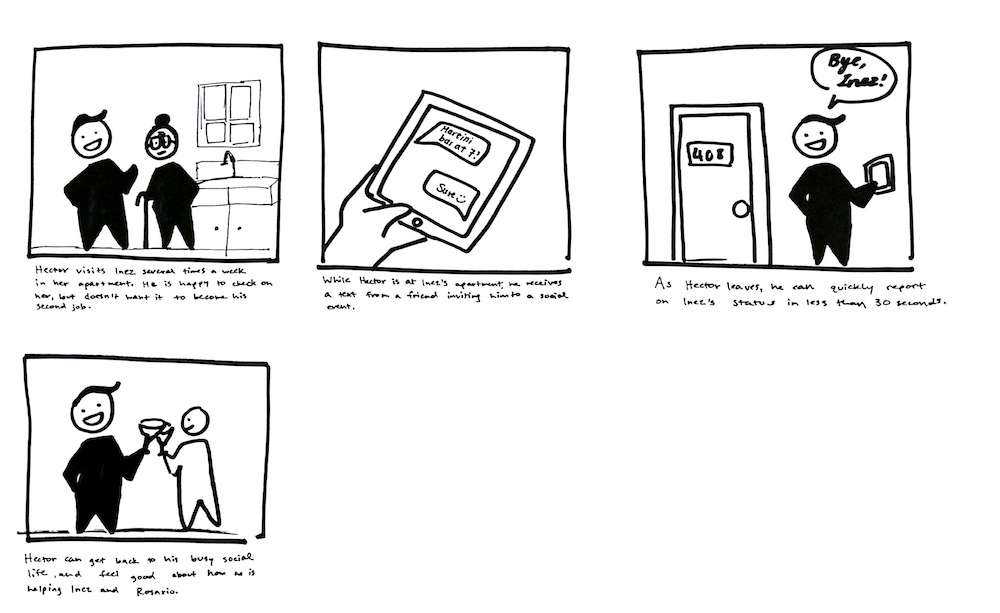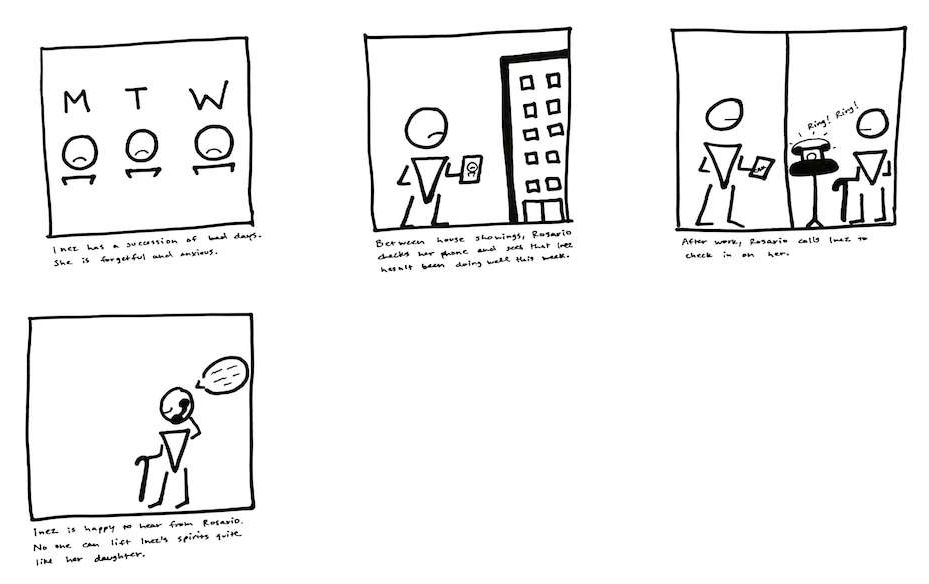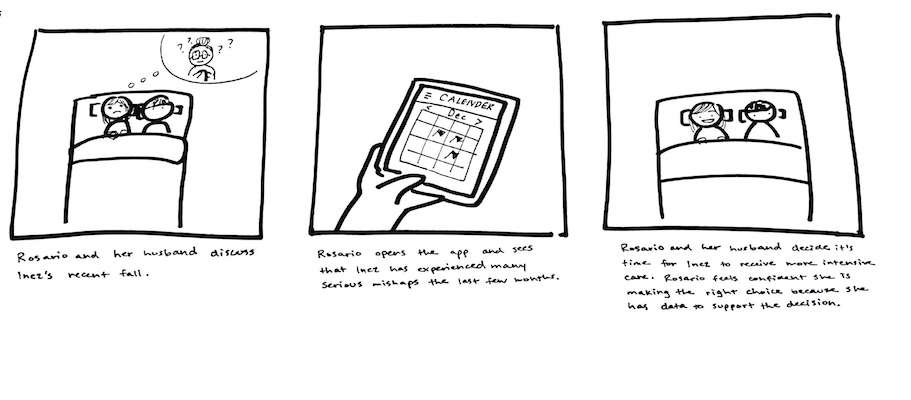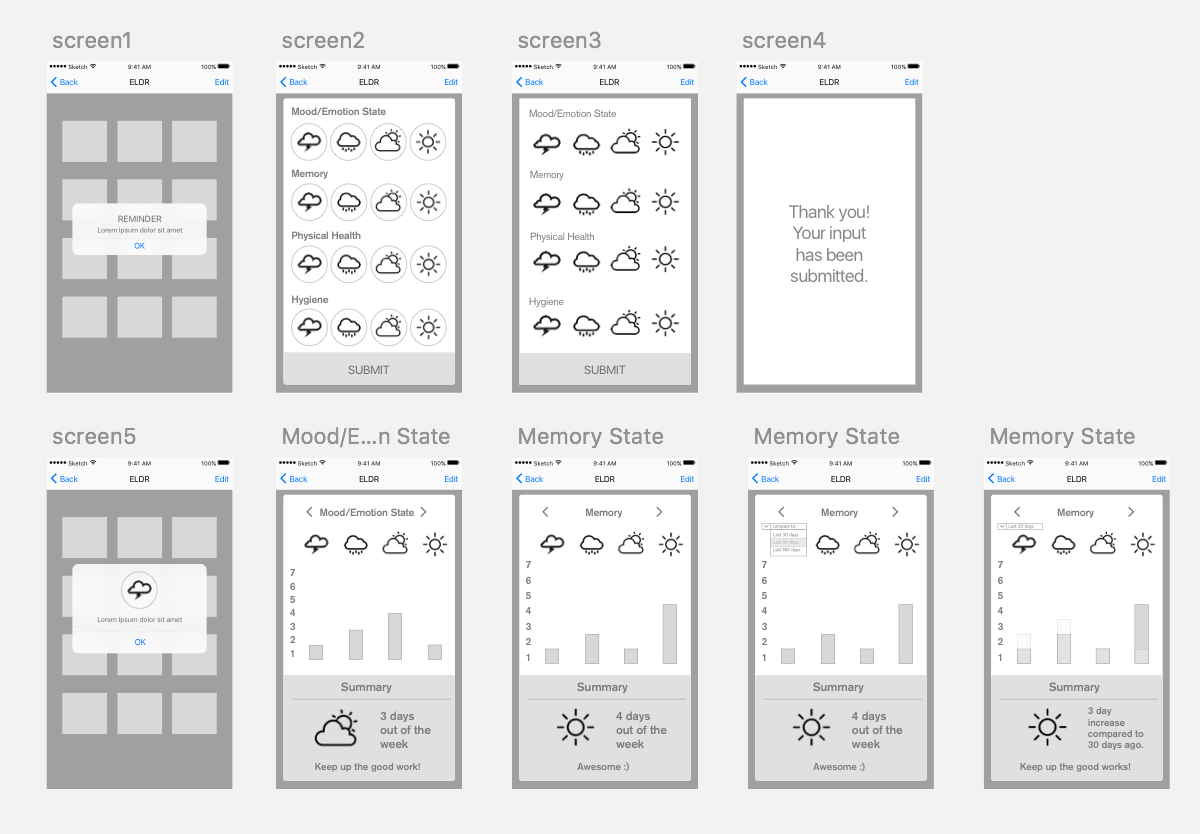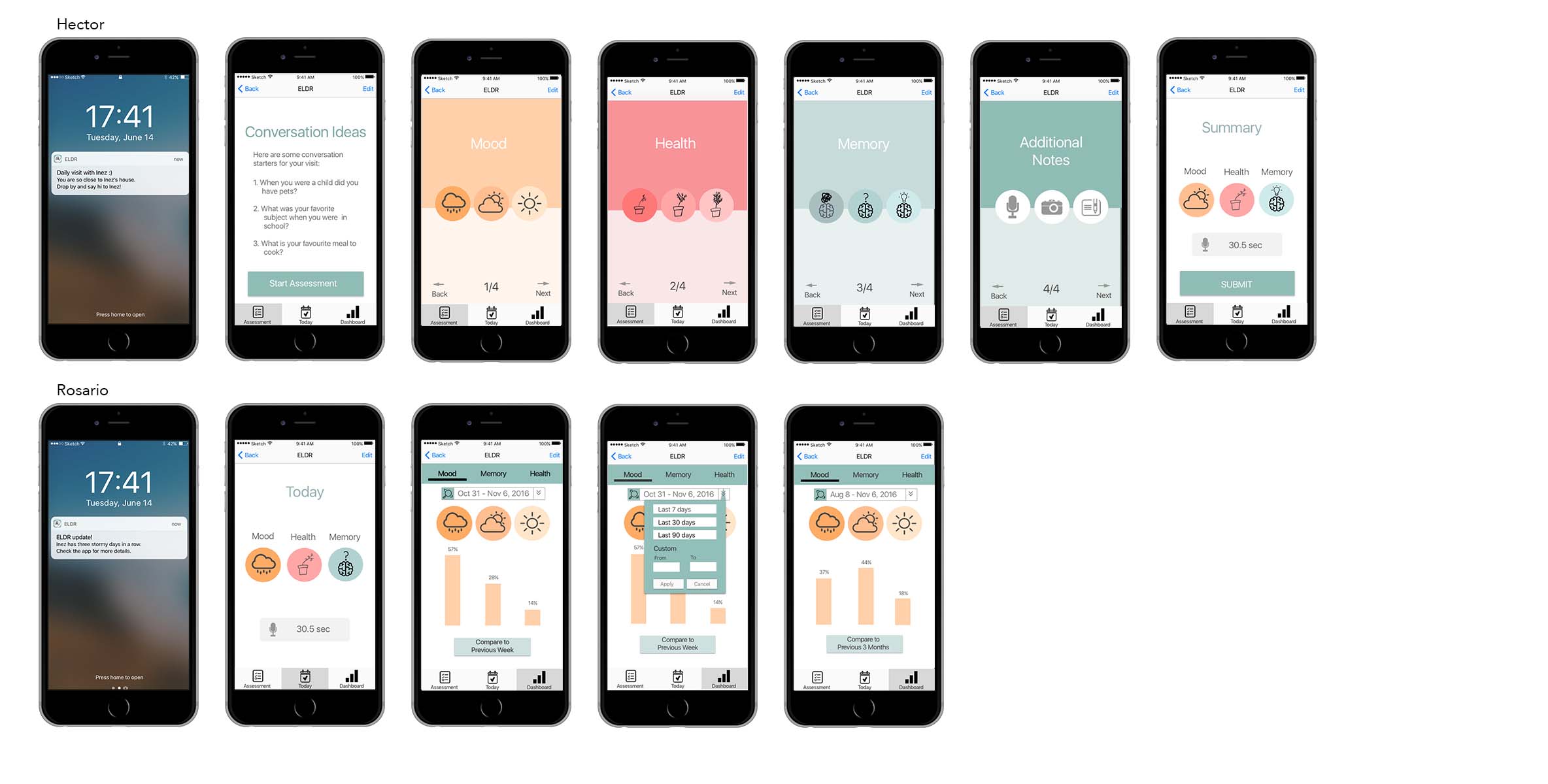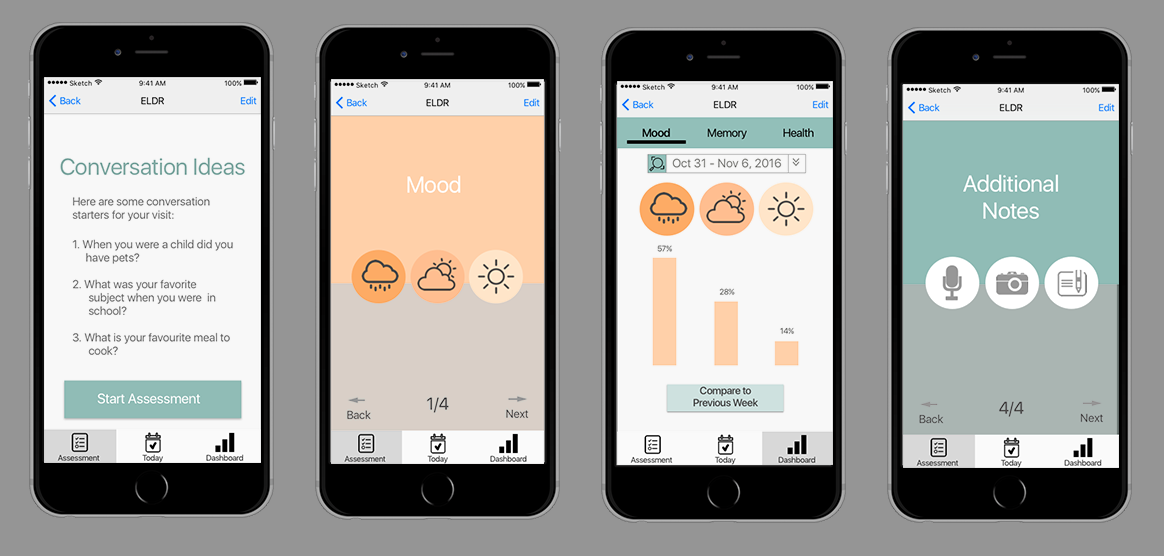
OUR PROCESS
PERSONAS
Our team was provided with three personas representing users and stakeholders of a future technology that would be useful for caregivers of older people in the early stages of dementia. We were tasked with conceiving of a concept and designing the UI for a mobile app that would meet the needs of the personas.
USER INTERVIEWS
We conducted a series of user interviews to validate the needs we identified in the personas. We learned that ineffective communication between multiple, geographically dispersed people who are involved in the care of an elderly individual can make decisions about future care difficult and contentious.
STORY BOARDING
We asked the question: "How can we make life easier for Hector, Rosario and Inez? What are their biggest concerns, and what would a preferred future addressing those concerns look like?"
WIREFRAMES
Focusing on each of these preferred futures, we created wireframes of the two main interactions we envisioned for users of ELDR:
- Quickly documenting metrics about Inez's mental state during or after a visit
- Tracking and understanding the progress of those metrics over time
INCORPORATING FEEDBACK
We obtained several rounds of feedback from both users and our peers, and continued to iterate on our design.
A consistent point of feedback was that using so many cloud and sun icons caused confusion that the app was about weather. We explored several different sets of icons with the requirement that our choice would have to respect the sensitivity of the context of use. We chose an icon set for each metric that felt both representative of the question and sensitive to our users.
We also learned from our users that caregivers often use casual conversation to make quick assessments about the mental state of the person they care for. We incorporated simple conversation starters into ELDR to integrate this existing behaviour.
